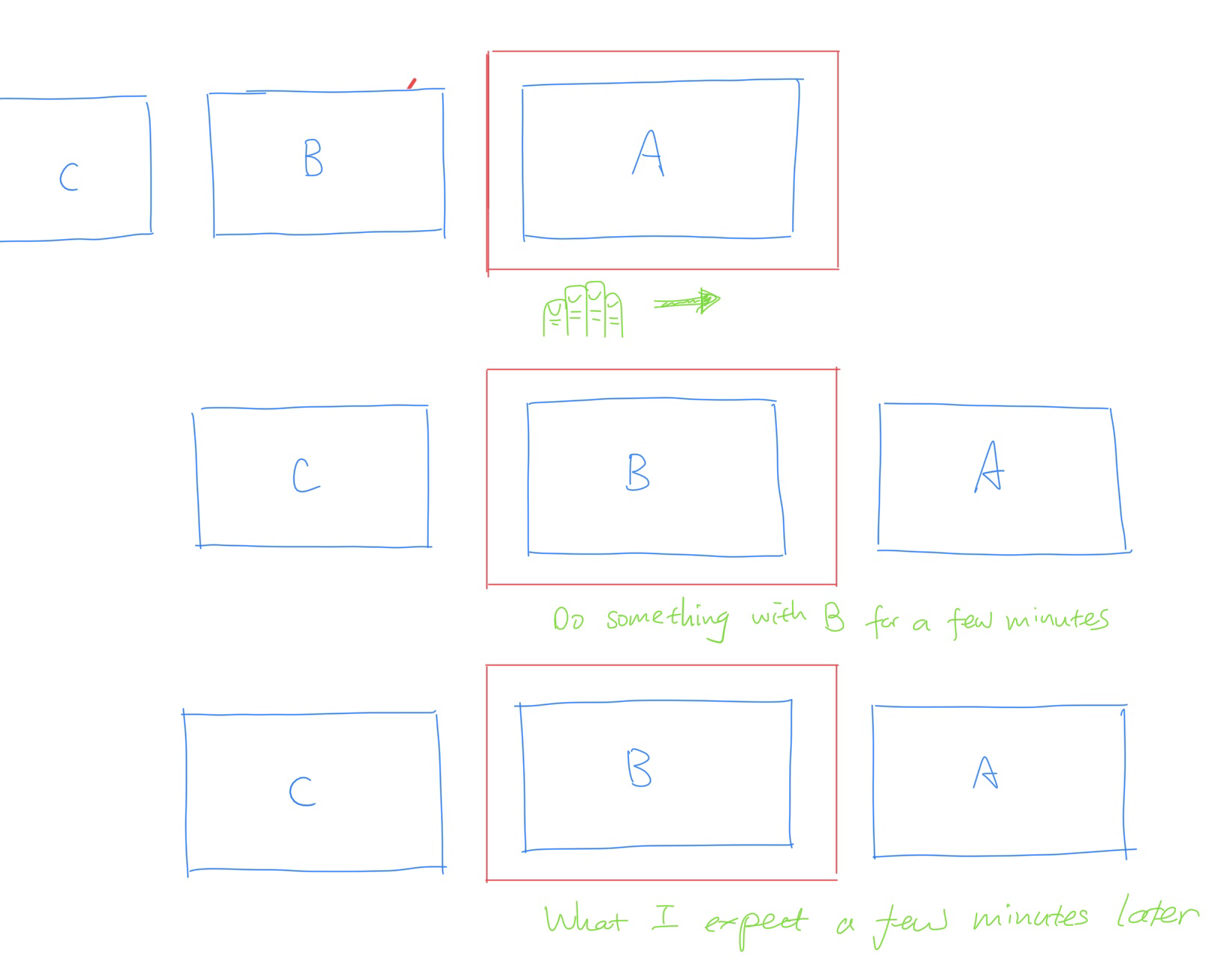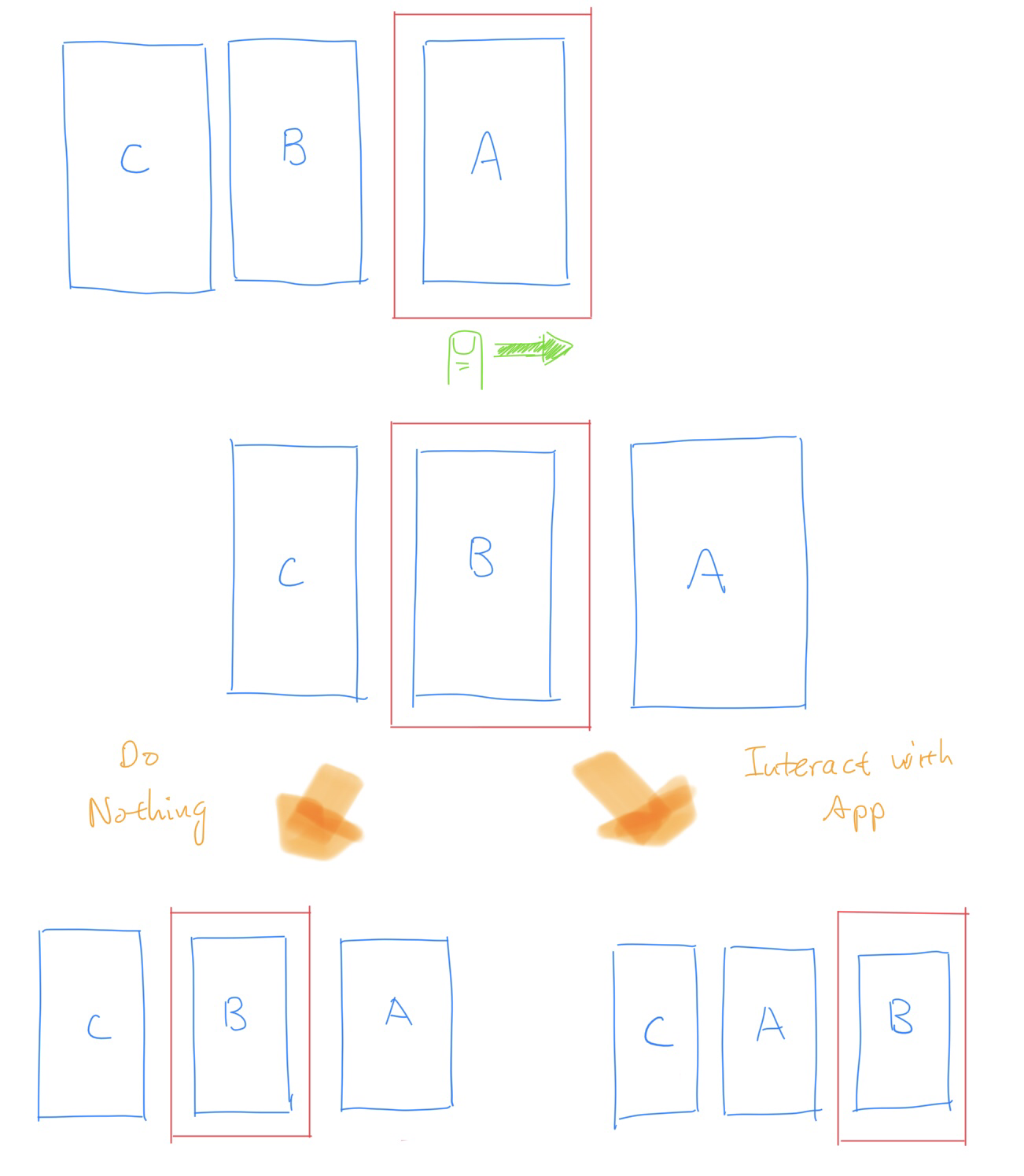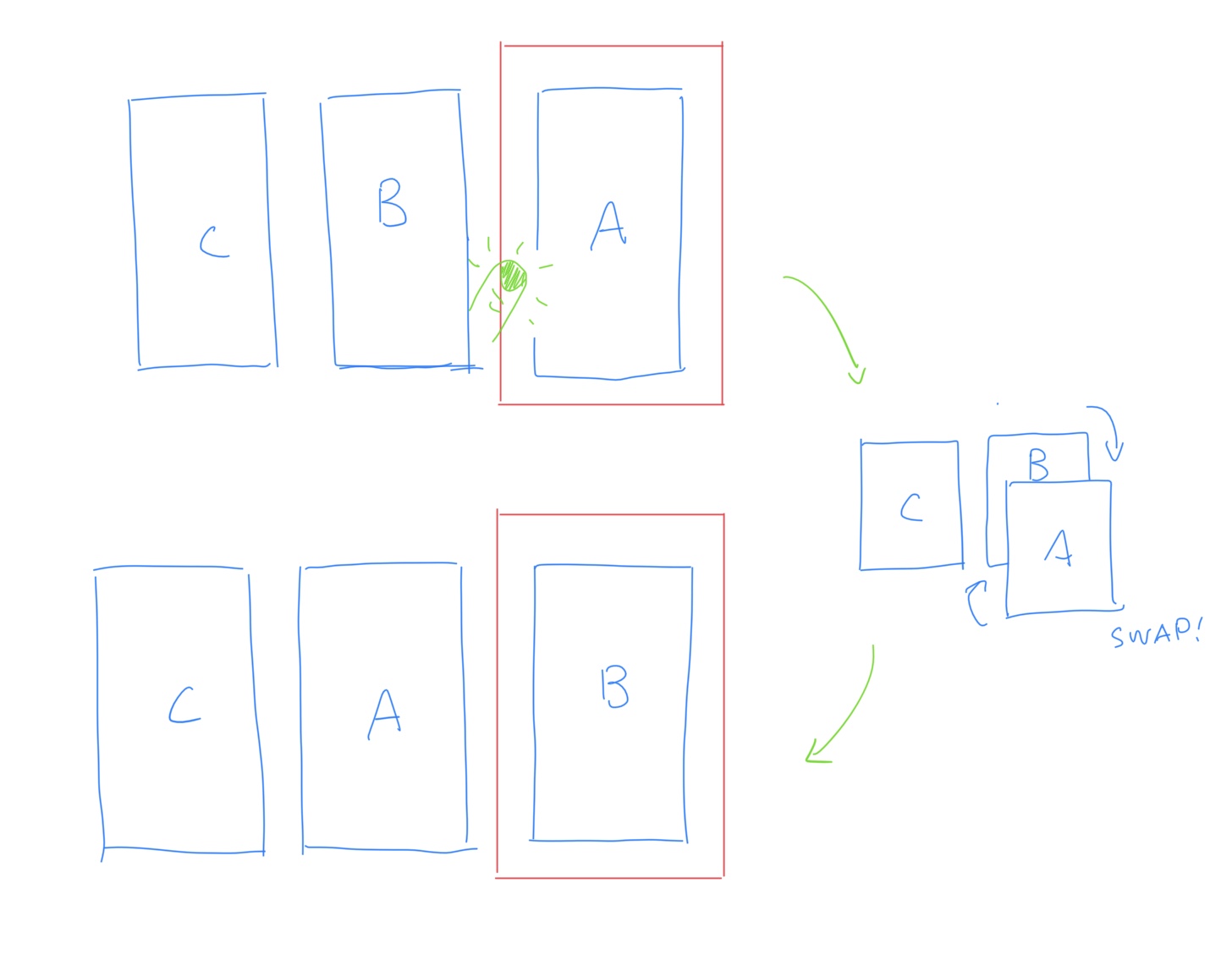I’ve read a few opinion pieces recently claiming that because iPhone X is one year ahead of schedule, iOS 11 isn’t quite ready yet for the new screen and interaction patterns. I didn’t think those were more than attention-grabbing speculations, until I’ve noticed some jarring inconsistencies in UI. Today, let's look at the multitasking mental model on the iPad and iPhone X.
On the iPad, you can use four fingers to swipe left and right to switch between a linear row of recently used apps. Most recently used is on the right, and least recently used on the left. You can swipe right to move to the second app in this queue and interact with it for a while, and still be able to swipe left to return to the previous one. The order of apps in this queue remain the same unless one of these two things happens:
- You enter multitasking expose view and tap on an app. This app will now go to the front (right) of the queue.
- You exit to home screen and open an app. This app will now go to the front (right) of the queue.
This is a good mental model. Because if I swipe right to work on another app, my previous app is essentially out of screen, floating to the right side of my iPad. I expect to see it again when I swipe left. Let’s call this the bidirectional quick switching model.

Too bad, on the iPhone X, even with bidirectional switching (via the “home bar” at the bottom), you have this annoying behavior.

If you do anything at all with app B, it immediately jumps to the front of the queue. It creates this incomprehensible behavior where you swipe left to work on B, and have to swipe left again to reach app A, which was supposed to have been swiped to the right of the screen.
However if you remember, in iOS 10 (or on non-iPhone X devices), this is the expected behavior, but with one crucial difference: there is no bidirectional quick switching. You force-touch the left edge of the screen to quick swap the last two apps in the queue and that was it. You couldn’t “switch” to the third, fourth app because it’s just an equivalent of double tapping the multitasking button on Android. That UX pattern matches with the swap behavior well.

On the iPhone X, given the animation of swiping behavior (which is a slide, not a swap) and the bidirectional nature of quick switching, I can’t help but believe that this is a UI bug. The iPad model makes too much sense. And the iPhone X bug throws a wrench in that beautiful mental model.
